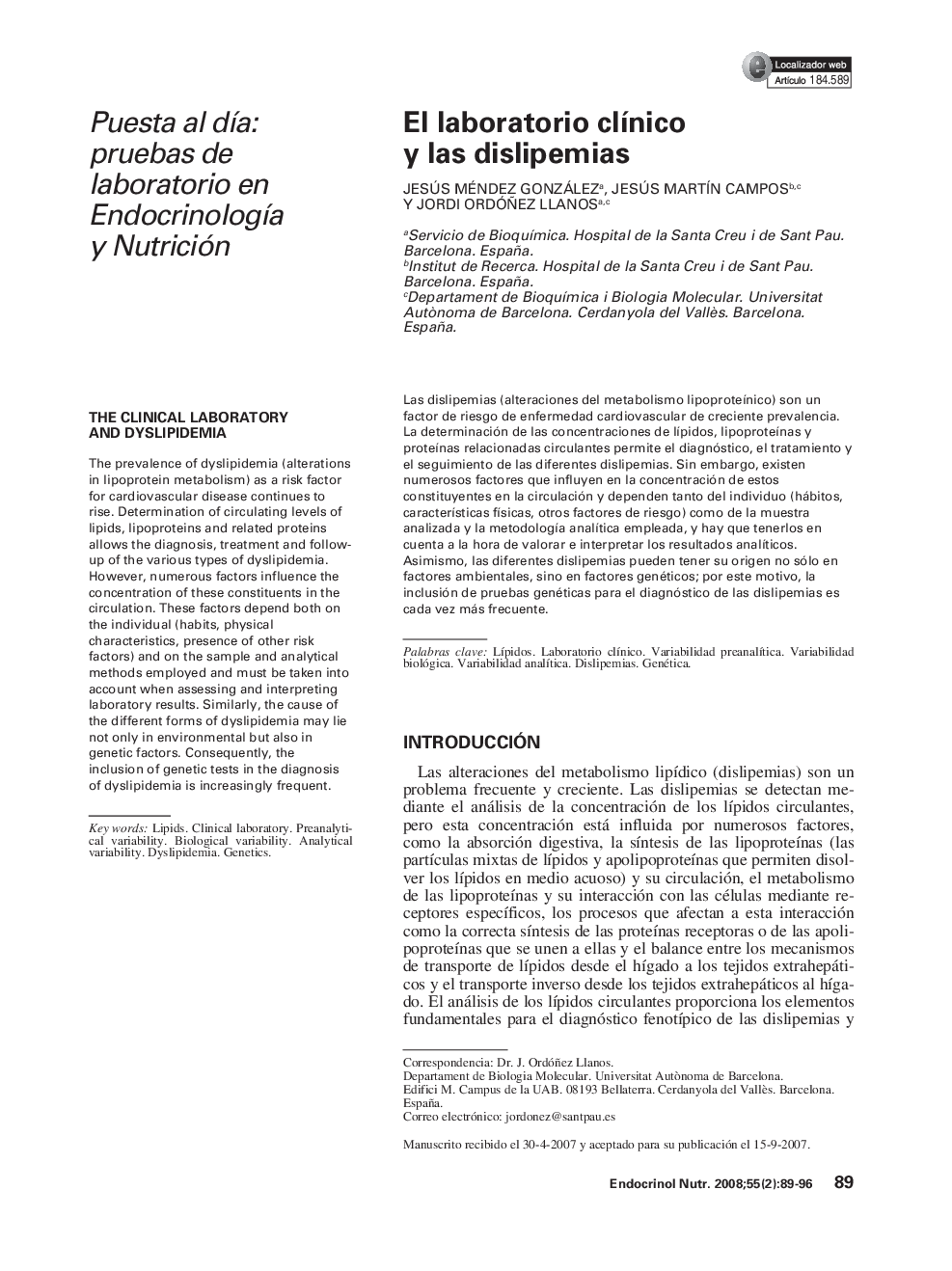| Article ID | Journal | Published Year | Pages | File Type |
|---|---|---|---|---|
| 2774102 | Endocrinología y Nutrición | 2008 | 8 Pages |
Abstract
The prevalence of dyslipidemia (alterations in lipoprotein metabolism) as a risk factor for cardiovascular disease continues to rise. Determination of circulating levels of lipids, lipoproteins and related proteins allows the diagnosis, treatment and followup of the various types of dyslipidemia. However, numerous factors influence the concentration of these constituents in the circulation. These factors depend both on the individual (habits, physical characteristics, presence of other risk factors) and on the sample and analytical methods employed and must be taken into account when assessing and interpreting laboratory results. Similarly, the cause of the different forms of dyslipidemia may lie not only in environmental but also in genetic factors. Consequently, the inclusion of genetic tests in the diagnosis of dyslipidemia is increasingly frequent.
Keywords
Related Topics
Life Sciences
Biochemistry, Genetics and Molecular Biology
Clinical Biochemistry
Authors
Jesús Méndez González, Jesús MartÃn Campos, Jordi Ordóñez Llanos,
